Best in State
The best golf courses in Michigan
Northwest Michigan, from Arcadia to Harbor Springs, is one of America's great golf destinations. Public access options include the two courses at Arcadia Bluffs (both ranked in America's 100 Greatest Public Courses), four courses at Boyne Highlands, 27 holes at Bay Harbor, Belvedere (private but with public tee times) and three courses at Forest Dunes.
Golfers can also try to finagle their way onto top private courses like Crystal Downs (14th on America's 100 Greatest Courses), Kingsley Club (110th) or True North. Other parts of the state are equally appealing. The western edge between Benton Harbor and Grand Haven offers gems like Tom Doak's Lost Dunes, Jack Nicklaus' American Dunes and Robert Trent Jones' Point O' Woods, while the suburbs of Detroit are rich with historic clubs including Oakland Hills, Franklin Hills, the Country Club of Detroit and Birmingham Country Club.
Below you'll find our 2023-'24 ranking of the Best Golf Courses in Michigan. Also be sure to check out our collection of the best courses you can play in Michigan.
We urge you to click through to each individual course page for bonus photography, drone footage and reviews from our course panelists. Plus, you can now leave your own ratings on the courses you’ve played … to make your case why your favorite should be ranked higher.

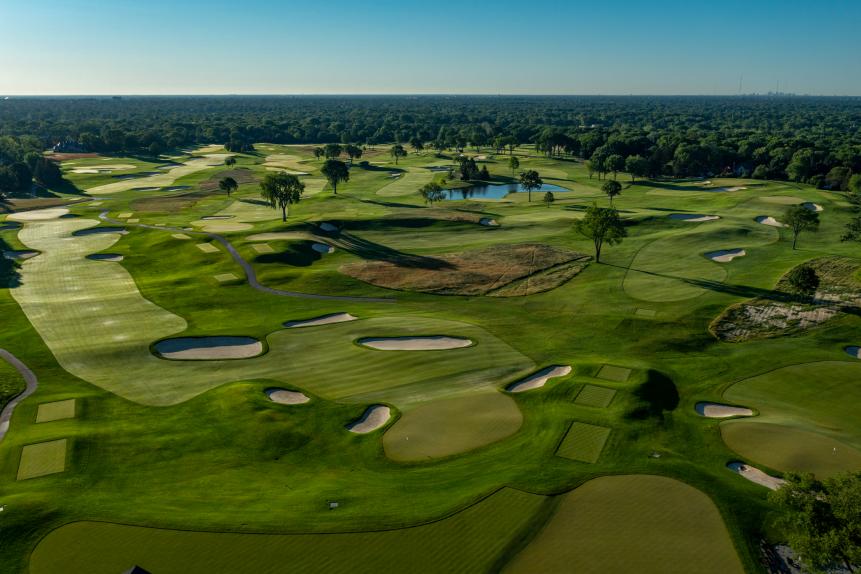
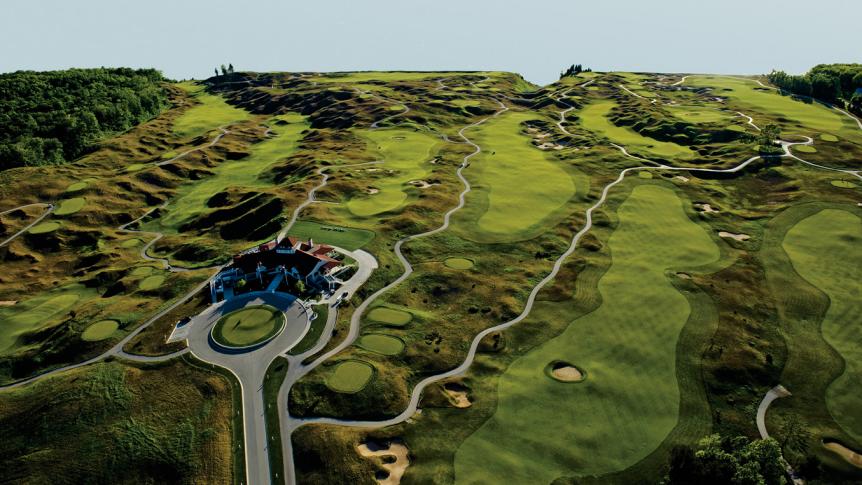
Can a 100 Greatest course be a sleeper? The Bluffs Course at Arcadia Bluffs has been overshadowed by Pacific Dunes ever since it finished second to it in the Best New Upscale Public Course race of 2001. And likewise it’s been second-fiddle to Crystal Downs, a northern Michigan neighbor that every visitor wants to play, even though it’s private and Arcadia is public. And even by Whistling Straits, the imitation links on the opposite side of Lake Michigan that Arcadia Bluffs resembles, although the sand dunes at Arcadia are natural, not manmade. More recently, the Bluffs faces competition from within, the newly-opened sister layout, the South Course at Arcadia Bluffs, designed by Dana Fry in the style of C.B. Macdonald and Seth Raynor.
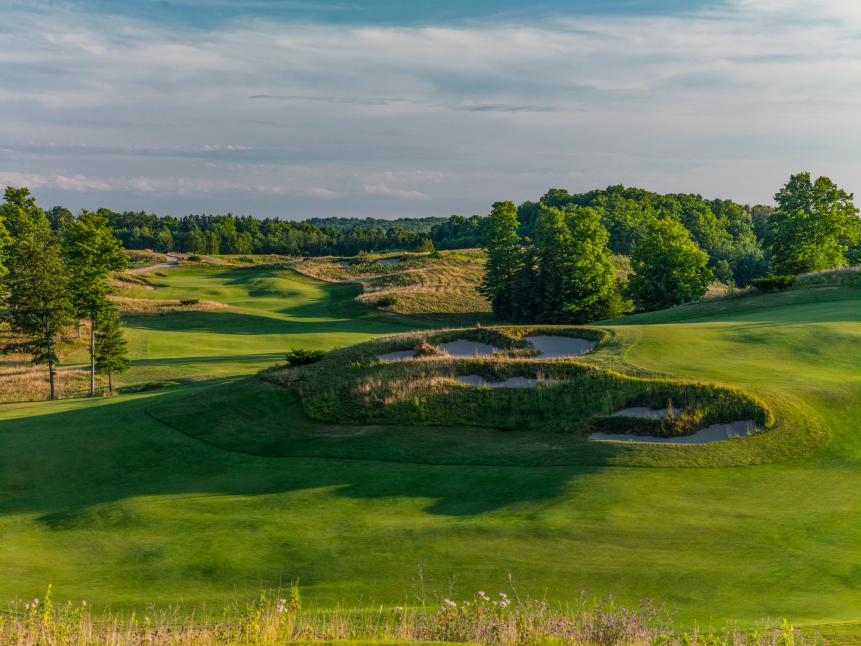
Expertly routed across glacial domes and over kettle holes, Kingsley Club opens with a split fairway, a high-right avenue separated from a low-left one by a cluster of sod-face bunkers. It’s an attention grabber than is repeated in various fashions throughout the round. For instance, the hilltop green on the short par-3 second seems tiny in comparison to the deep shaggy bunkers surrounding it. The long par-3 fifth plays over a valley with a tongue of fairway ready to repel any shot that comes up short. The par-4 sixth seems to slant in one direction, then cant in the other direction once past a lateral ridge that runs down the fairway. Every hole has its own character. With roughs of tall fescue and occasional white pines and hardwoods, Kingsley is all natural and all absorbing, a thoughtful design by Mike DeVries, who grew up in the area playing Crystal Downs.

Anyone who has ever played Mike Keiser’s terrific nine-hole Dunes Club in New Buffalo, Mich.—one of the best nine-hole courses in America, if not the best—is familiar with the “lost dunes” that exist along that stretch of Lake Michigan in southeast Michigan. Lost Dunes Golf Club, a half hour north along the same sand ridge, was created from an old sand quarry, lined on three sides by 60-foot-tall forested sand dunes, bottomed by two deep pit lakes and traversed through the center by I-94. (Nothing wrong with that: Oakmont is bisected by the Pennsylvania Turnpike.) There was still plenty of sand left in the quarry, which allowed Doak and his team to create some vast sandy waste areas as well as windblown dunes-style bunkers. Since the greens were shaped from native sand, the green contours are very bold. “The wildest set of greens I’ve ever built,” said Doak soon after it opened. When Keiser played the course on opening day, he was considering hiring Doak to design Pacific Dunes. “I can’t have him build these kind of greens for the retail golfer,” Keiser said. “Doak’s a professional,” he was told by another in his group. “He’ll give you whatever you want.” Sure enough, Doak was hired for Pacific Dunes, and the Bandon course became one of the best in the nation.
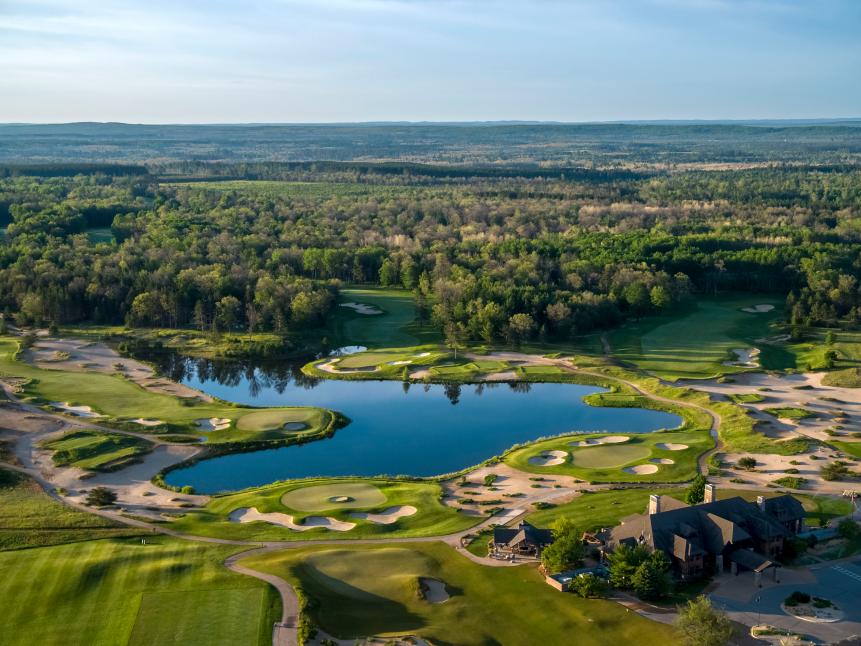
From Golf Digest Architecture Editor emeritus Ron Whitten:
The Tom Weiskopf-designed Forest Dunes in Michigan is a terrific layout on a terrific piece of property, with sand dunes deposited by the nearby Au Sable River and covered with mature pines.
But it's not a unique piece of property. When I first played it, I was struck by how much Forest Dunes resembles a Texas course designed by Weiskopf's former partner, Jay Morrish. That course, Pine Dunes in Frankston, Texas, is built on much the same terrain, sand dunes covered in pines. Though they were working at the same time on their respective projects (Forest Dunes was completed in 2000 but didn't open until 2002; Pine Dunes opened in 2001), I don't think Weiskopf or Morrish had any idea that they were working on such similar courses, and I don't think they stole each other's ideas. But it's uncanny how they created kissing-cousin courses. Or maybe not. The two worked together for over a decade before splitting up in 1996, and they shared a common philosophy of course design.
Both courses have split personalities, with portions that look like Augusta National—lots of grass, trees, pine needles and gleaming white sand bunkers—and other portions that look like Pine Valley—rugged holes edged by roughs of brownish native sand and scruffy underbrush. Each have one long par 4 (the second at Forest Dunes, the fourth at Pine Dunes) that curves to the left through trees, has no fairway bunkers but has one big bunker at the left front of the green. Both have par-3 16th holes that play over wasteland to an angled green with bunkers right and left. Both courses have very similar drive-and-pitch par 4s.
Explore our complete review here—including bonus photography and ratings from our expert panelists.
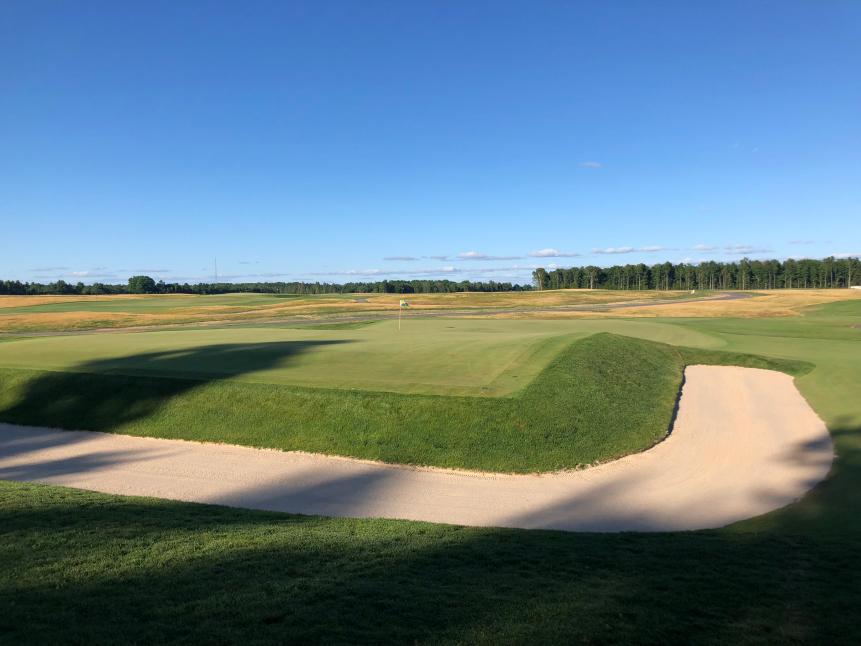

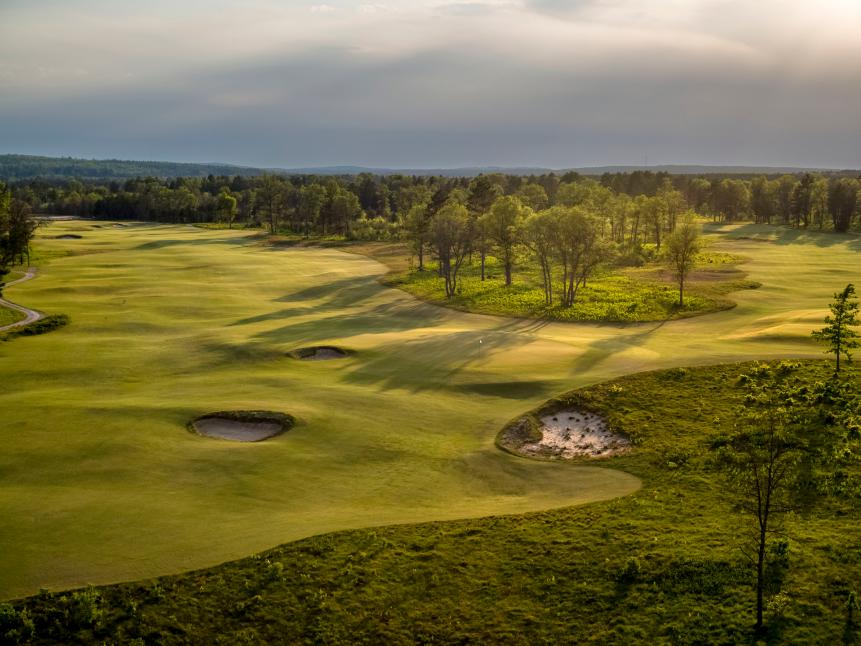
.jpg.rend.hgtvcom.861.574.suffix/1651613132812.jpeg)
A decade before architect Mike DeVries created the world-class Cape Wickham Golf Club in Australia, he produced an equally compelling design in Michigan’s Upper Peninsula, a second 18 for Marquette. It’s called Greywalls because of all the granite rock outcroppings that edge some holes and squeeze others, like the short par-4 fifth, and because the rock provides the rugged topography over which this course scampers up and plunges down. The vistas out over Lake Superior are fantastic, beginning with the opening tee shot. Like Wilderness Club, this is a destination course worth hiking to play.
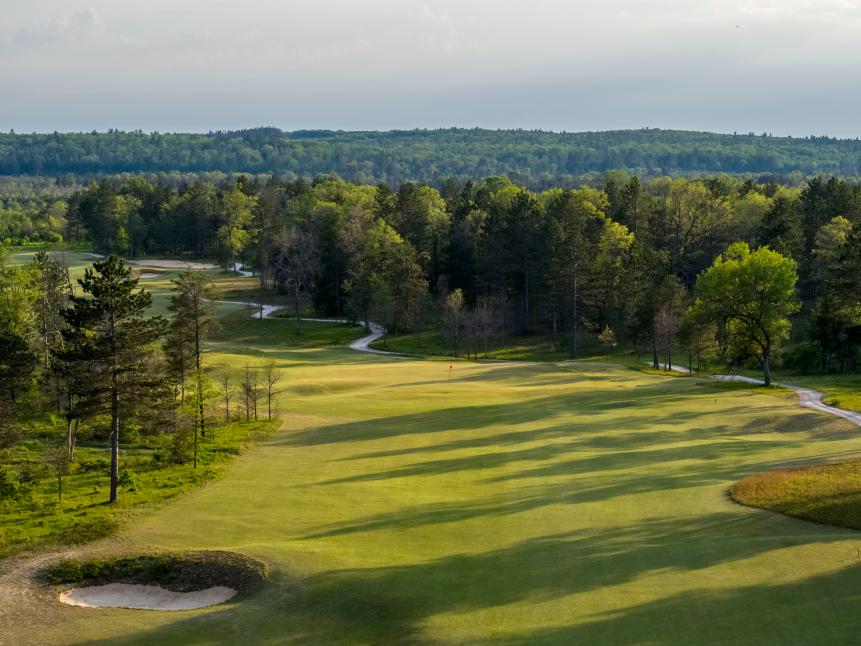
The Red Course is the counterclockwise routing of The Loop, and as the name suggests, both it and the Black Course play out to ninth holes at a far corner of the property, then back in. What’s most impressive in playing the Red (and the Black, for that matter), is that there is never the sensation of playing a hole backwards. The topography, bunkering and green entrances are all so compelling that it’s barely noticeable that each serves two purposes. The Loop is part of the Forest Dunes resort, which also contains Forest Dunes, a fine Tom Weiskopf design.

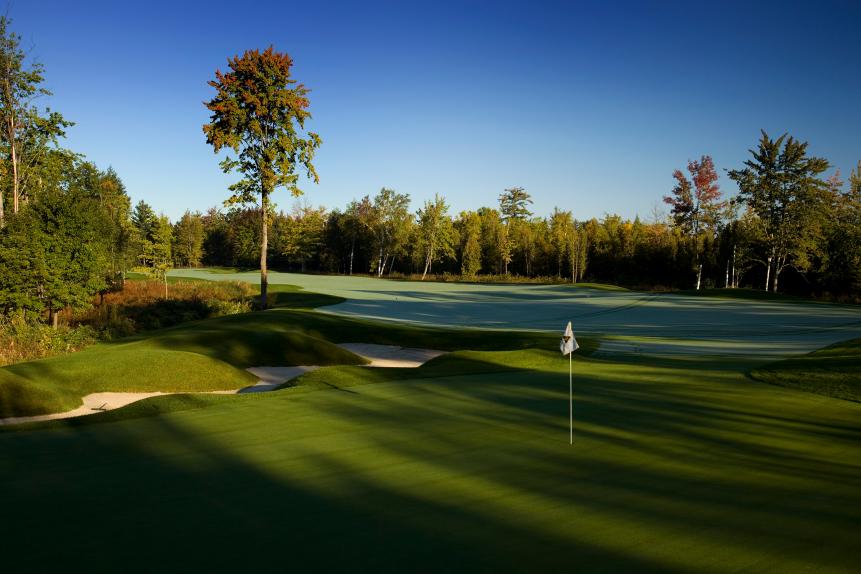



From Golf Digest Architecture Editor emeritus Ron Whitten:
As it exists today, I consider Orchard Lake Country Club to be a classic 1926 Hugh Alison design. But in the beginning, it was anything but that.
For one thing, back in the 1920s, landscape architect Lynn Lavis, a Syracuse graduate associated with the British design firm of H.S. Colt and C.H. Alison, and golf course contractor William Connellan (who also had a hand in designing several courses in Michigan), had a devil of a time building the course. When they staked out the layout according to Alison's plan, the 10th and 18th fairways were under 18 inches of water that had seeped over from an adjacent tamarack swamp.
They pumped and pumped and installed thousands of feet of tile drains to reclaim some dry land. Then another issue was encountered with the swamp in which the 17th green was to be built. Alison had planned the hole to be a par-5 with an island green, but after dumping tons upon tons of soil into the swamp to form a green pad, the proposed green sank into the morass. So the 17th hole became a par 4, and I'm not certain Alison knew about that in advance.
Explore our complete review here—including bonus photography and ratings from our expert panelists.

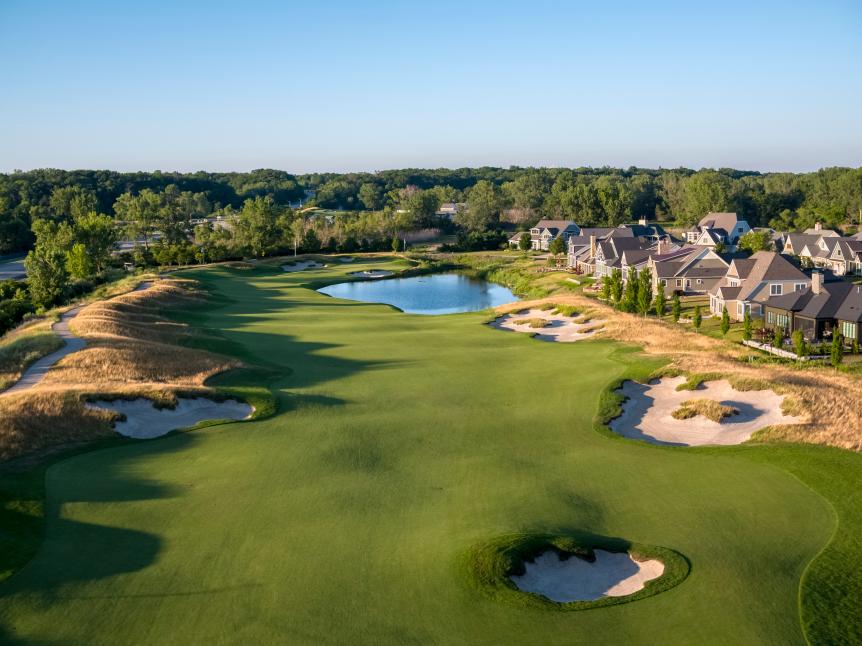
.jpg.rend.hgtvcom.861.574.suffix/1653909255033.jpeg)
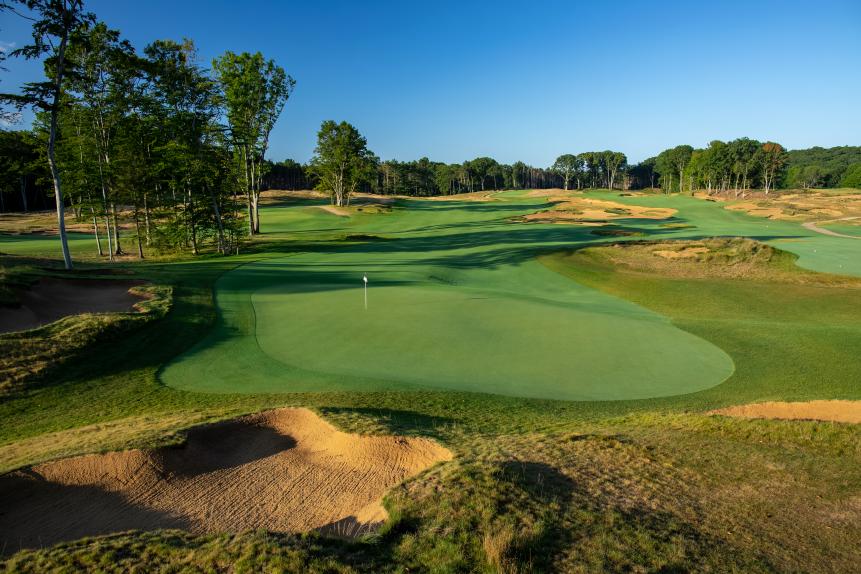
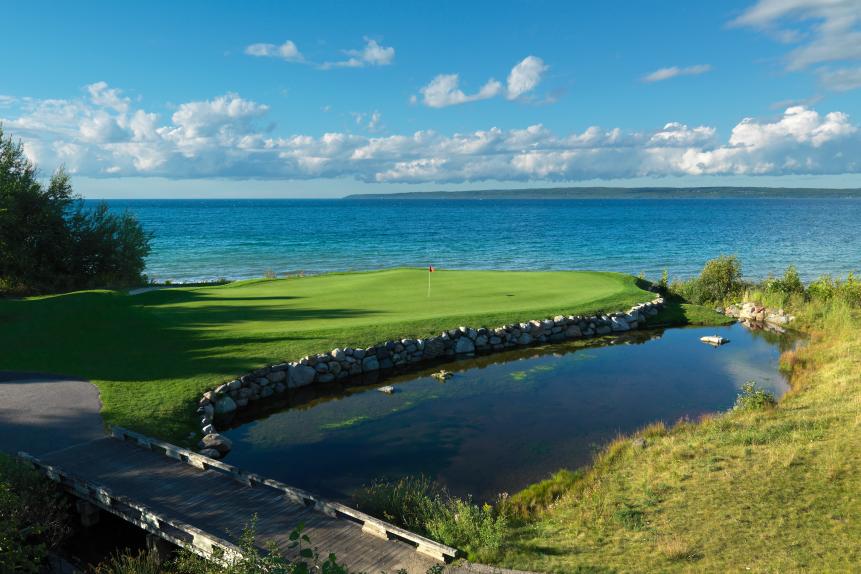


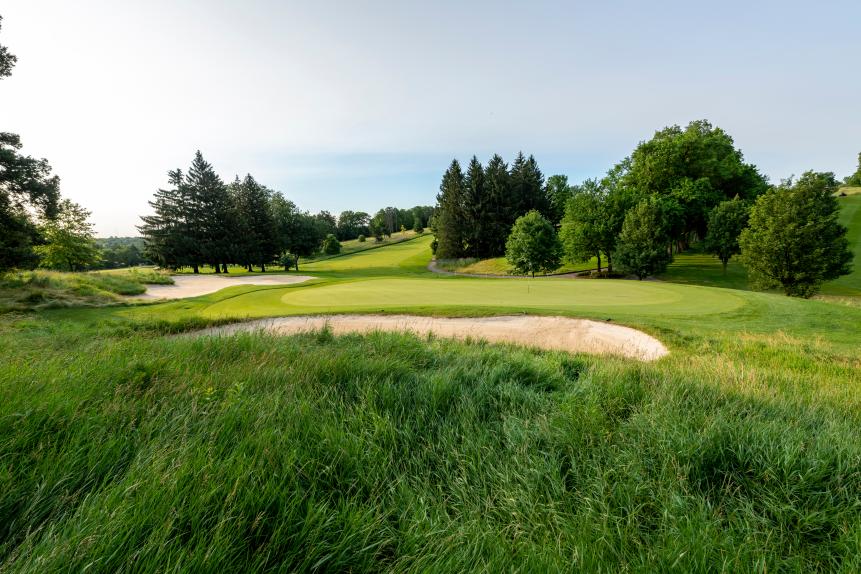

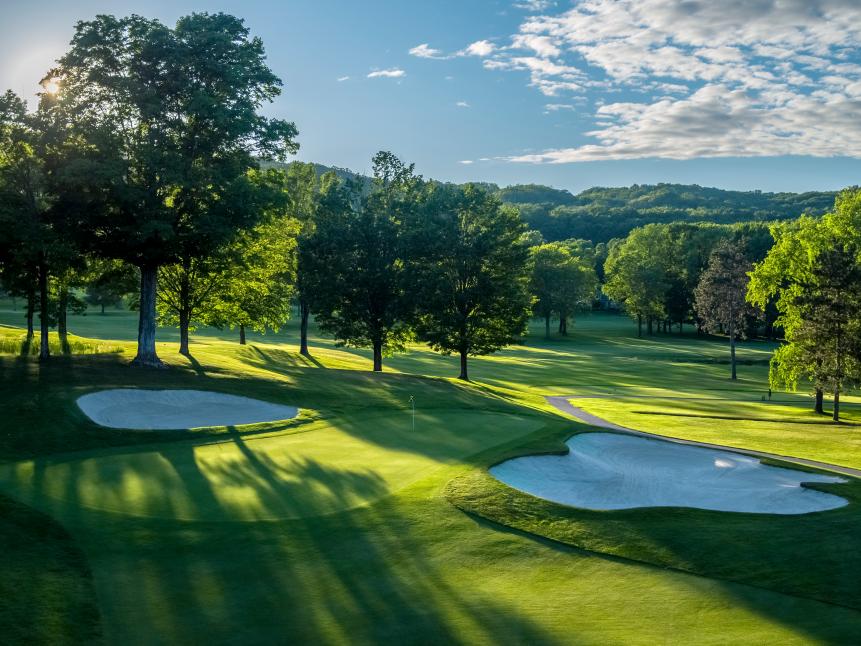

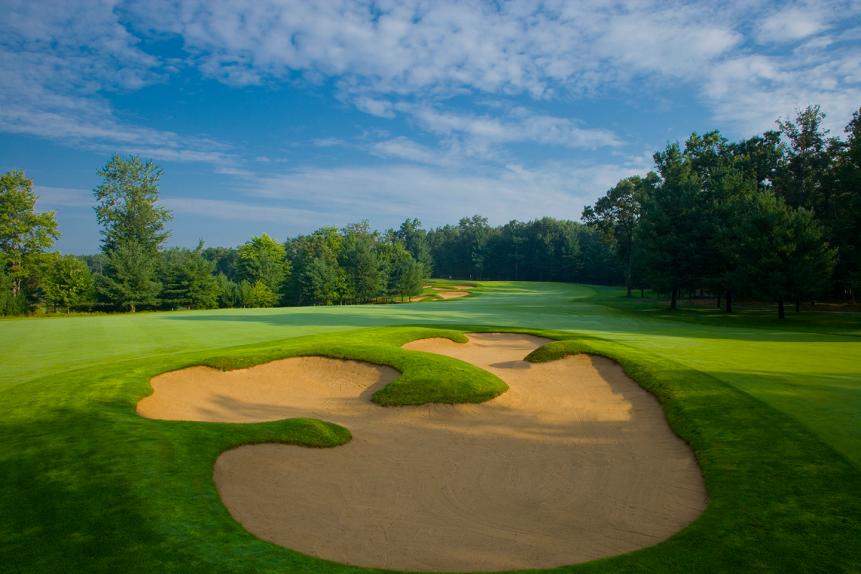
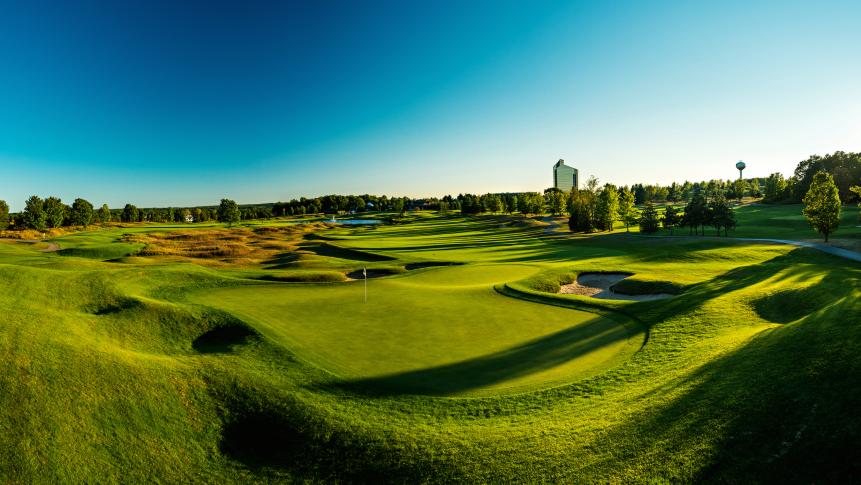

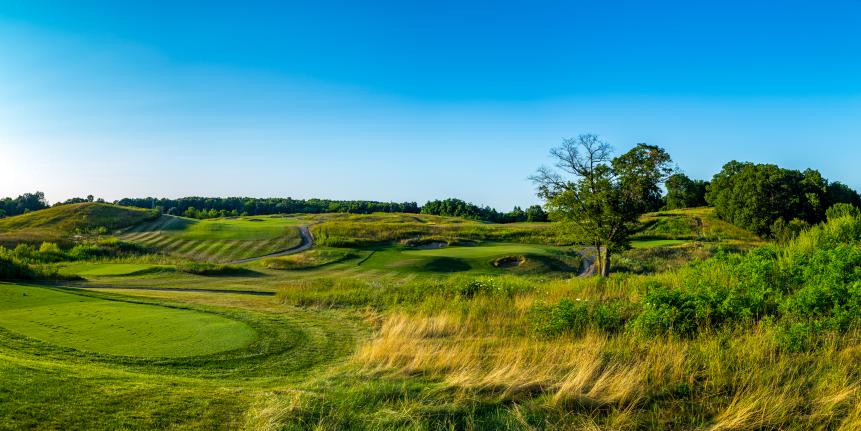
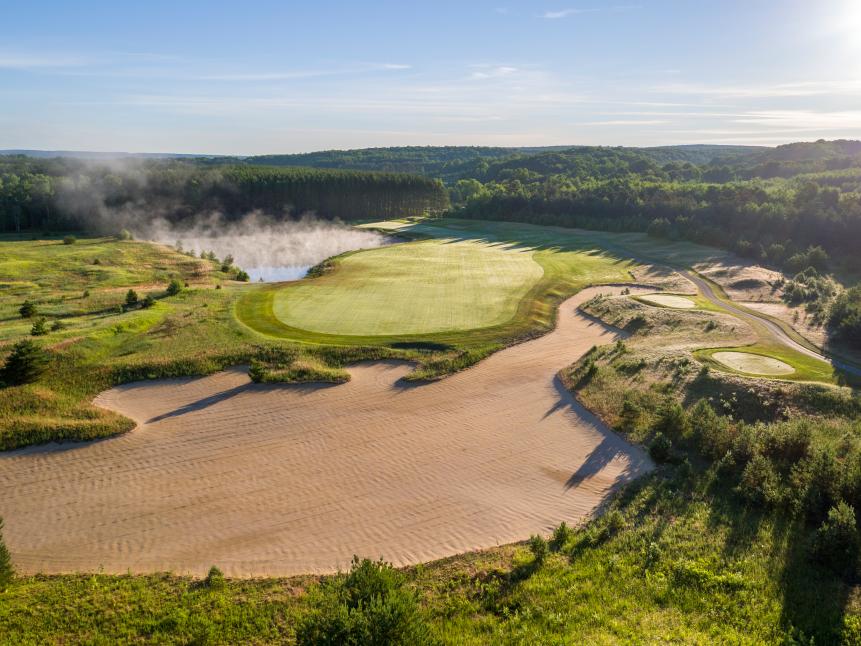
• • •
Explore Golf Digest's recently relaunched Places to Play community, where you can add star ratings and reviews for all the courses you play. We've collected tens of thousands of reviews from our course-ranking panelists to deliver a premium experience, which includes experts' opinions, bonus course photography and videos, plus much more. Check it out here!


